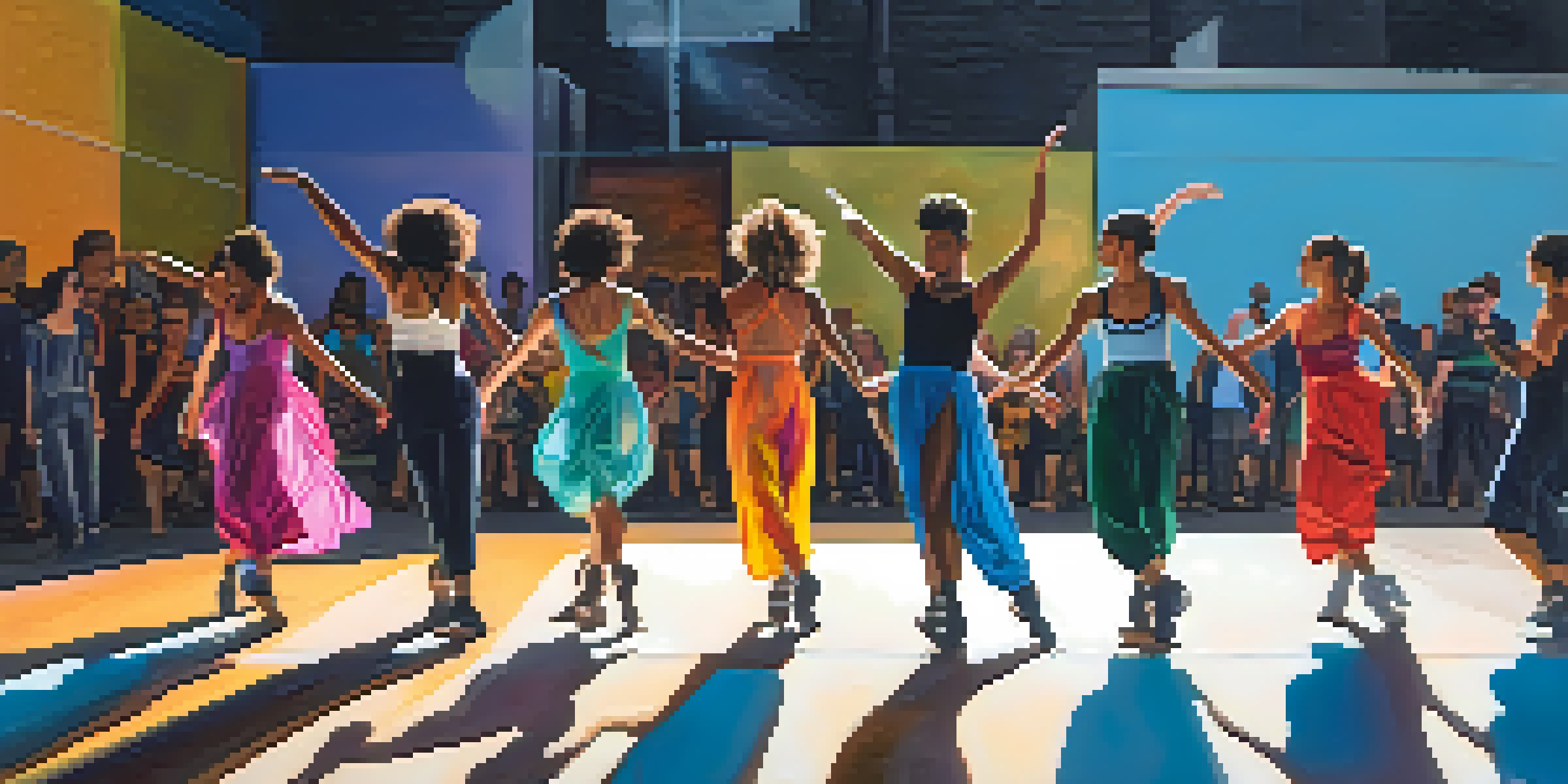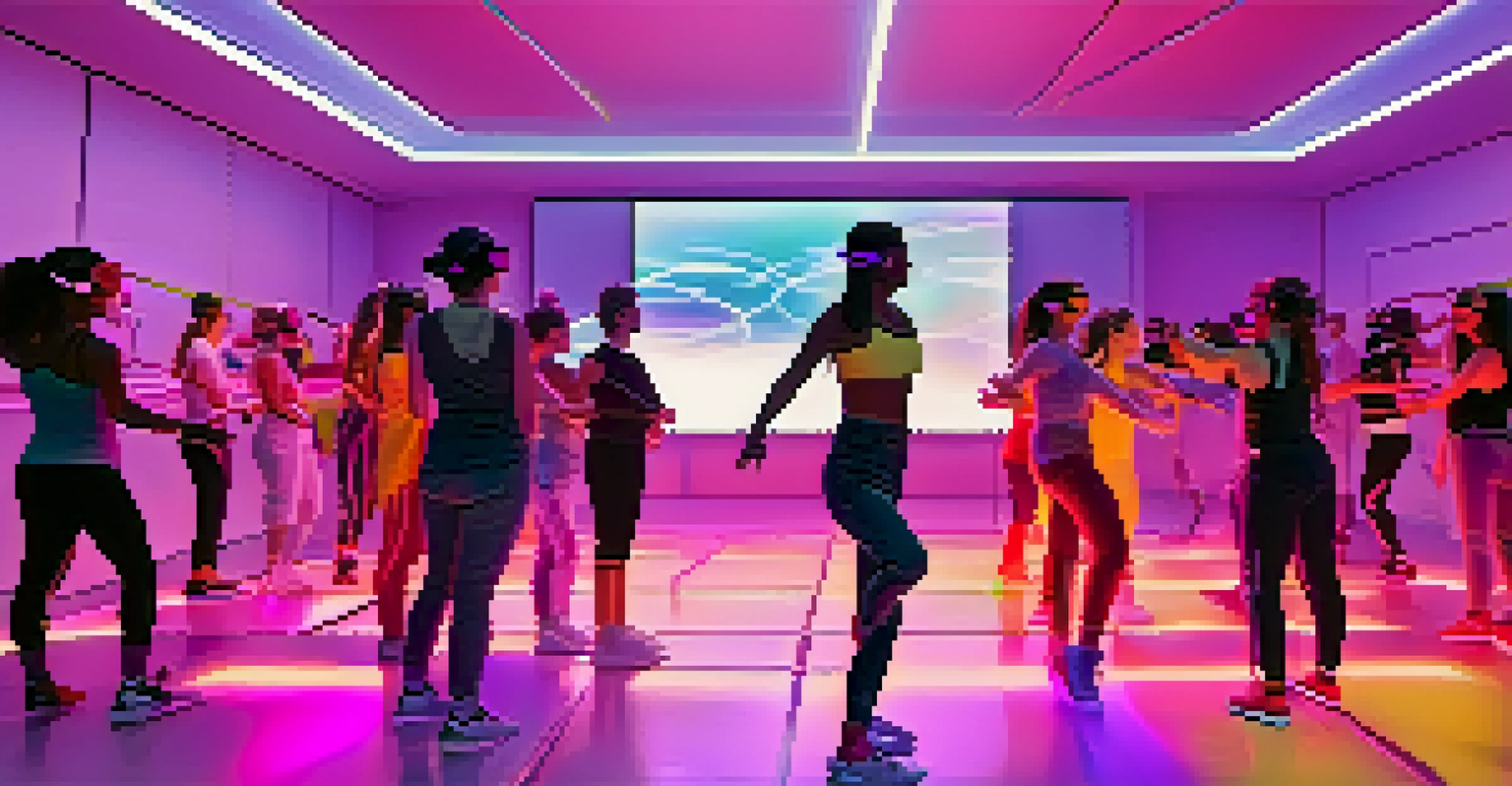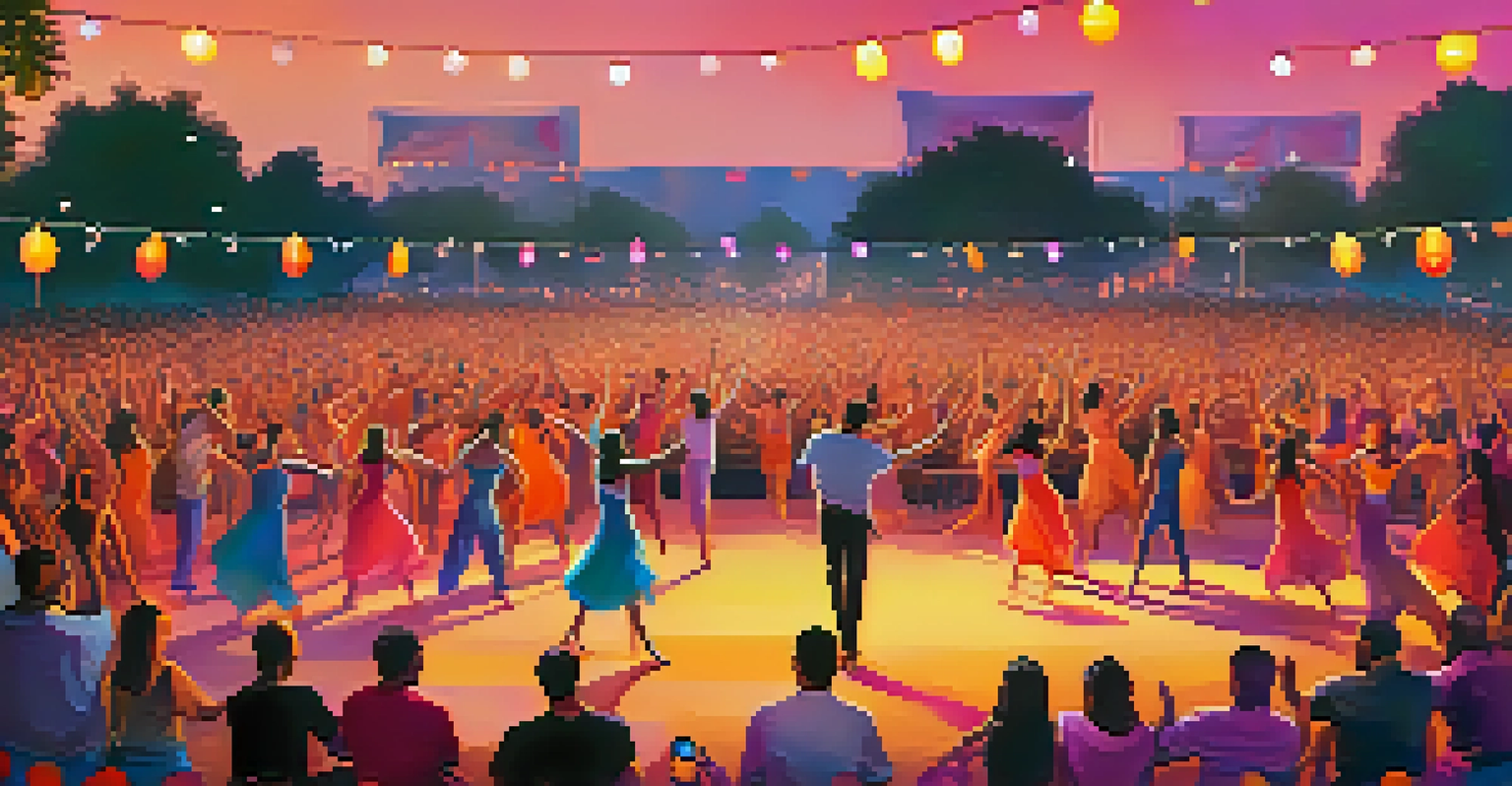Dance in the Digital Age: Technology's Influence on Styles

The Evolution of Dance Styles Through Technology
Dance has always been a reflection of culture, and technology has played a pivotal role in shaping those cultural expressions. From the invention of the phonograph to the rise of streaming platforms, each technological advancement has influenced how dance is created and performed. Today, we see styles like hip-hop, contemporary, and even ballet evolving in response to digital trends.
Dance is the hidden language of the soul.
Consider how dance challenges traditional boundaries; styles are now blending in ways that were unimaginable a few decades ago. Dancers can learn from experts around the world through online tutorials, making diverse styles accessible to anyone with an internet connection. This global exchange of ideas has enriched the dance community, leading to innovative fusions that celebrate various cultural heritages.
Related Resource
Moreover, the digital age has birthed new genres, such as TikTok dance challenges, which leverage viral trends to create a new form of expression. These trends not only popularize dance but also encourage creativity among participants, allowing for personal interpretation within a global framework. As a result, we see a dance landscape that is dynamic and ever-evolving.
The Impact of Social Media on Dance Trends
Social media platforms like Instagram, TikTok, and YouTube have become the new stages for dancers, allowing them to showcase their talents to a global audience. This accessibility has revolutionized how dance trends emerge and spread, with viral videos often defining what’s ‘in’ at any given moment. One day, a simple move can capture hearts; the next, it’s the foundation of a worldwide dance challenge.

Furthermore, social media allows for immediate feedback and interaction, creating a dialogue between dancers and their audiences. This engagement fosters a sense of community, where fans can participate in dance trends, share their takes, and even collaborate with their favorite dancers. The result is a thriving ecosystem that keeps dance styles fresh and relevant.
Tech Shapes Modern Dance Styles
Technological advancements have transformed dance, blending styles and making diverse forms accessible to anyone with an internet connection.
However, this rapid pace of change can also be overwhelming. Dancers must constantly adapt to stay current, which can lead to challenges in maintaining their unique styles. Balancing personal artistry with the demand for trends is a tightrope walk many dancers navigate daily.
Technology in Dance Education: A Game-Changer
The advent of technology has transformed dance education, making it more accessible than ever before. Online classes and virtual workshops allow students from all over the world to learn from renowned instructors without the geographical limitations of traditional studios. This democratization of dance education empowers aspiring dancers to pursue their passions, regardless of their location.
Technology is best when it brings people together.
In addition, technology tools such as video analysis software can help dancers refine their techniques. By recording their movements and receiving instant feedback, they can identify areas for improvement and track their progress over time. This level of personalized learning is a game-changer, enabling dancers to develop their skills at an accelerated pace.
Related Resource
Moreover, virtual reality (VR) and augmented reality (AR) are beginning to enter the dance education space, offering immersive experiences that can enhance learning. Imagine practicing alongside a holographic instructor or exploring a virtual dance studio! These innovations promise to redefine how we teach and learn dance in the years to come.
The Role of Dance Films and Streaming Services
Dance films and streaming services like Netflix and Disney+ have given new life to dance performances, allowing them to reach wider audiences than ever before. These platforms are not just showcasing traditional performances but are also experimenting with new storytelling techniques that incorporate dance as a central element. This blending of media has created exciting opportunities for choreographers and filmmakers alike.
For example, films like 'Hamilton' and 'Step Up' series have highlighted how dance can be a powerful narrative tool, captivating audiences in ways that traditional stage performances might not. Viewers can now experience dance in the comfort of their homes, breaking down the barriers that once limited access to live performances. This trend is expanding the appreciation for dance as an art form.
Social Media Drives Dance Trends
Platforms like TikTok and Instagram have revolutionized how dance trends emerge and spread, enabling immediate audience engagement and participation.
However, with this ease of access also comes the challenge of oversaturation. As more content becomes available, it can be harder for individual performers and choreographers to stand out. Yet, the potential for unique collaborations between filmmakers and dancers continues to spark innovation, ensuring that the art form remains vibrant and relevant.
Virtual Reality and Augmented Reality in Dance
Virtual reality (VR) and augmented reality (AR) are emerging technologies that are making waves in the dance world. These tools create immersive experiences that allow dancers to interact with virtual environments, enhancing creativity and performance possibilities. For instance, dancers can rehearse in a virtual space that mimics a stage setting, helping them visualize their performances in a realistic context.
Moreover, AR can be used to enhance live performances, providing audiences with interactive experiences that blend the digital and physical worlds. Imagine attending a dance show where holographic elements dance alongside the performers! This integration of technology not only captivates audiences but also broadens the artistic horizons for choreographers.
Related Resource
While the possibilities are exciting, there are challenges to consider as well, such as technical limitations and the need for specialized training. As artists begin to embrace these technologies, we can expect to see more innovative uses that push the boundaries of traditional dance forms.
Crowdfunding and Digital Platforms for Dancer Support
In the digital age, crowdfunding platforms have emerged as vital resources for dancers and choreographers seeking financial support for projects. Websites like Kickstarter and Patreon allow artists to connect directly with their audiences, enabling fans to contribute to the creation of new works. This direct support can empower artists to take creative risks without the constraints of traditional funding models.
Additionally, digital platforms provide opportunities for dancers to monetize their skills through online classes, merchandise, and exclusive content. This shift means that dancers can cultivate their brands and generate income outside of conventional performance avenues. The ability to control their financial destinies is a significant advantage for many artists navigating the dance industry today.
Crowdfunding Empowers Dancers
Digital platforms allow dancers to connect with audiences for financial support, enabling them to take creative risks and monetize their skills.
However, building an online presence requires time and effort, which can be challenging for those who are focused on honing their craft. Striking a balance between creating art and promoting it online is an ongoing struggle for many dancers, but the potential to connect with a global audience makes the effort worthwhile.
The Future of Dance: Embracing Digital Innovation
As technology continues to evolve, the future of dance appears more promising than ever. Dancers are increasingly embracing digital innovation, from creating virtual performances to experimenting with AI-generated choreography. These advancements invite new ways of thinking about what dance can be, challenging the notion of tradition and inviting fresh perspectives.
Moreover, the integration of technology into dance is likely to foster collaboration across artistic disciplines. Dancers, musicians, visual artists, and tech developers can work together to create multidisciplinary projects that push boundaries and captivate audiences. This collaborative spirit is essential for keeping dance relevant in an ever-changing cultural landscape.

Ultimately, the future of dance in the digital age is about balance—honoring traditions while embracing innovation. By leveraging technology thoughtfully, the dance community can create new narratives, foster inclusivity, and ensure that the art form continues to inspire and engage audiences for generations to come.